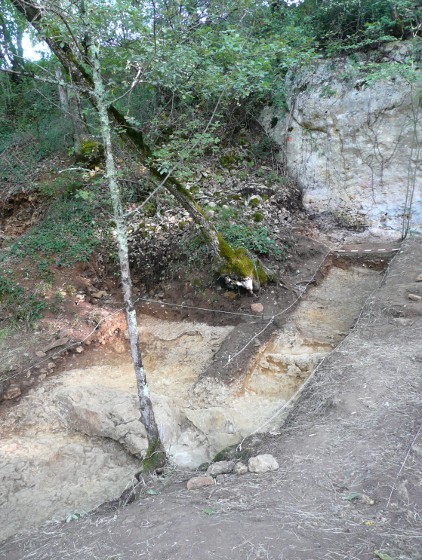Abri Peyrony - 2009
In 2009 we conducted a four week field season at Abri Peyrony and at the nearby site of Roc de Combe-Capelle to see whether in situ deposits remained at either site. At Roc de Combe-Capelle, the site made famous by the discovery of a modern skeleton a century ago associated with the Chatelperronian, we found only very small pockets of material attached to the cliff face. At Abri Peryony, however, under a layer of backdirt, we discovered in situ deposits on both the upper and lower terraces.
In 2009 we opened a large area on the lower terrace around a pit that likely resulted from clandestine excavations and around the test unit excavated in 1990 by Dibble and Lenoir. Additionally, a trench was begun to connect the lower terrace with the upper terrace and the cliff face; in other words, the excavation strategy was designed to obtain a complete section across the two terraces, to link the current excavations with Dibble/Lenoir excavations, and to obtain new assemblages from the in situ deposits.
By the end of the season, it was clear that extensive and rich deposits remained and that at least an additional season was required. We also discovered a concentration of burned material on the lower terrace that could represent the remains of a hearth. In addition to providing evidence for Neandertal fire use, this feature further supported the good state of preservation for the deposits, contradicting suggestions by Texier in 1990 that the deposits all derived from the overlying plateau.
